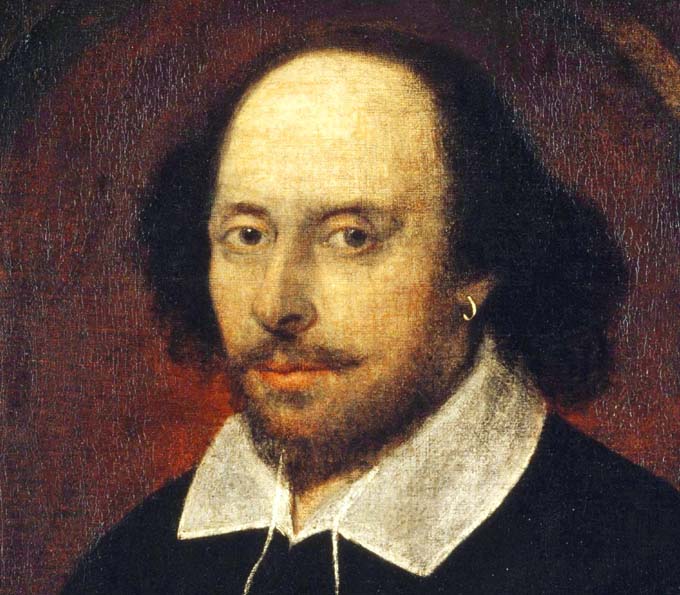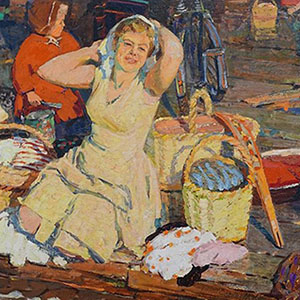Moscow and London to exchange greatest portraits

The Guardian
Moscow is to send figures such as Tolstoy, Tchaikovsky and Mussorgsky and London will reciprocate with Shakespeare, Mary Wollstonecraft and Thomas Carlyle in an unprecedented exchange of some of Russia and the UK’s greatest portraits.
The National Portrait Gallery in London and the State Tretyakov Gallery in Moscow are to mark the coincidence of their 160th anniversaries by loaning treasures for exhibitions next year in one of the visual arts’ biggest UK-Russian cultural exchanges.
Nicholas Cullinan, director of the NPG, said it was the most ambitious exhibition of Russian portraiture to take place in a British museum: “These two exhibitions in London and Moscow form an important act of cultural exchange for both institutions.”
His counterpart in Moscow, Zelfira Tregulova, said she hoped it signalled “the start of a bright new chapter in the history of cultural co-operation between our two countries.”
The importance of the exchange is reflected by the stellar nature of some of the loans. Moscow, for example, is lending one of its true national treasures in the shape of Vasily Perov’s portrait of Dostoyevsky, which is the only one the writer ever sat for.
The painting is seldom loaned and hasn’t been shown in Britain since 1959. “It is the sort of picture that every single Russian schoolchild knows,” said Rosalind Blakesley who is curating the London show.
Also hugely important is Ilya Repin’s portrait of Modest Mussorgsky, painted when the composer, at the age of 42, was at death’s door because of illness brought on by his chronic alcoholism.
The painting was commissioned by Pavel Tretyakov, the philanthropist who founded the state gallery, after he heard of Mussorgsky’s self-destructive troubles. He dispatched Repin, the most exciting Russian painter of his day, to a military hospital in St Petersberg to capture the composer before it was too late.
“It is an uncompromising realist style,” said Blakesley. “Mussorgsky is clearly a very sick man. There is this haunting look about him as he comes to terms with the fact he does not have long to live, yet there is this unnerving defiance there as well.”
The composer sat for four difficult days in 1881, dying before the planned final sitting. Repin found it the most powerful and poignant commission of his career, donating his fee to a memorial for the composer.
The London show will focus on a golden age for Russian arts – the 50 years before the 1917 revolution. But while the world is familiar with figures such as Akhmatova, Chekhov, Dostoevsky, Rimsky-Korsakov, Tchaikovsky, Tolstoy and Turgenev, it is less familiar with the Russian painters of the time.
Figures such as Repin, Mikhail Vrubel and Alexander Serov are “spectacular” artists, said Blakesley but “relatively unsung in the west and deserve a higher profile”.
Museum-goers know much more about Russia’s avant-garde –painters such as Malevich and Kandinsky – so the exchange is an opportunity to shine a rare light on Russian painters from the Realist, Impressionist and Symbolist movements, she said.
Moscow has opted for a broader sweep through British history and will borrow portraits of figures including Charles Dickens, Isaac Newton, Elizabeth I, Charles Darwin and Mary Wollstonecraft.
The loans include NPG jewels such as the Chandos portrait of Shakespeare, the first to enter the collection when the gallery was founded in 1856. There will also be the Ditchley portrait of Elizabeth I and Joshua Reynolds’ self-portrait of himself as a young man.
Blakesley, reader in Russian and European art at the University of Cambridge, said the Moscow choices reflected the nature of Russian interest in British cultural life. “They are extremely well informed about British history, about Walter Scott and Dickens and Byron, these are figures translated continuously into Russian and they have been for well over a century.”
There have been significant cultural exchanges over recent years between Russia and the UK including the 70 paintings that once belonged to Britain’s first prime minister, Robert Walpole, which were loaned back to his ancestral home Houghton in Norfolk in 2013.
The 2016 exchange is, however, unprecedented and celebrates the founding remits of both galleries to put together collections of portraits of each country’s most eminent and influential figures.
Blakesley said: “I think we are going to see more of it I really do, these cultural channels of communication are healthy and there is enormous appetite on both sides for these conversations to carry on, particularly at the moment.
“Russian museum directors are the first to recognise the significance these exhibitions can have.”
• Russia and the Arts: The Age of Tolstoy and Tchaikovsky is at the NPG, 17 March-26 June. Elizabeth to Victoria: British Portraits from the Collection of the National Portrait Gallery is at the State Tretyakov Gallery, 21 April-24 July.
News of the day




